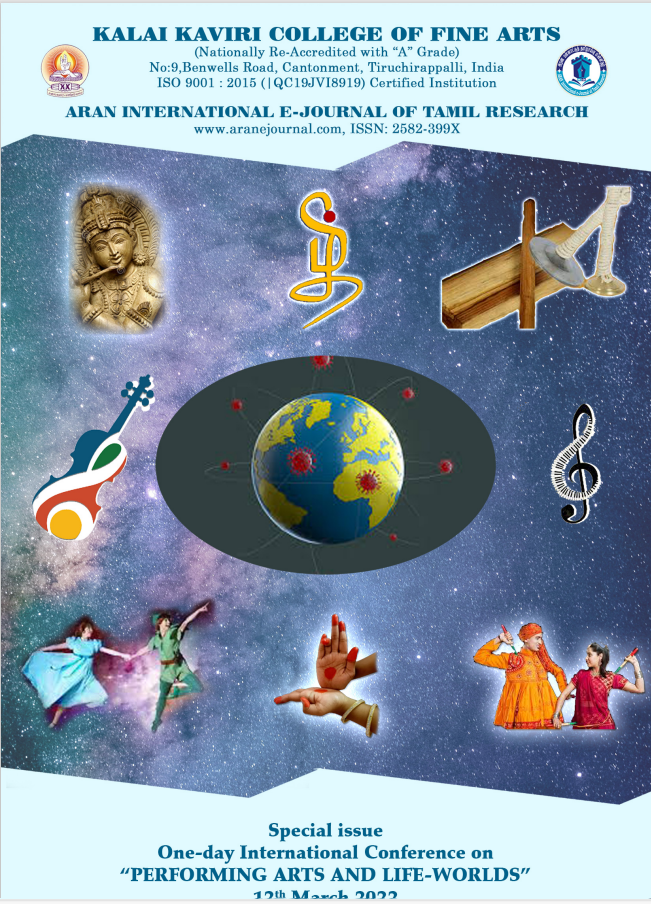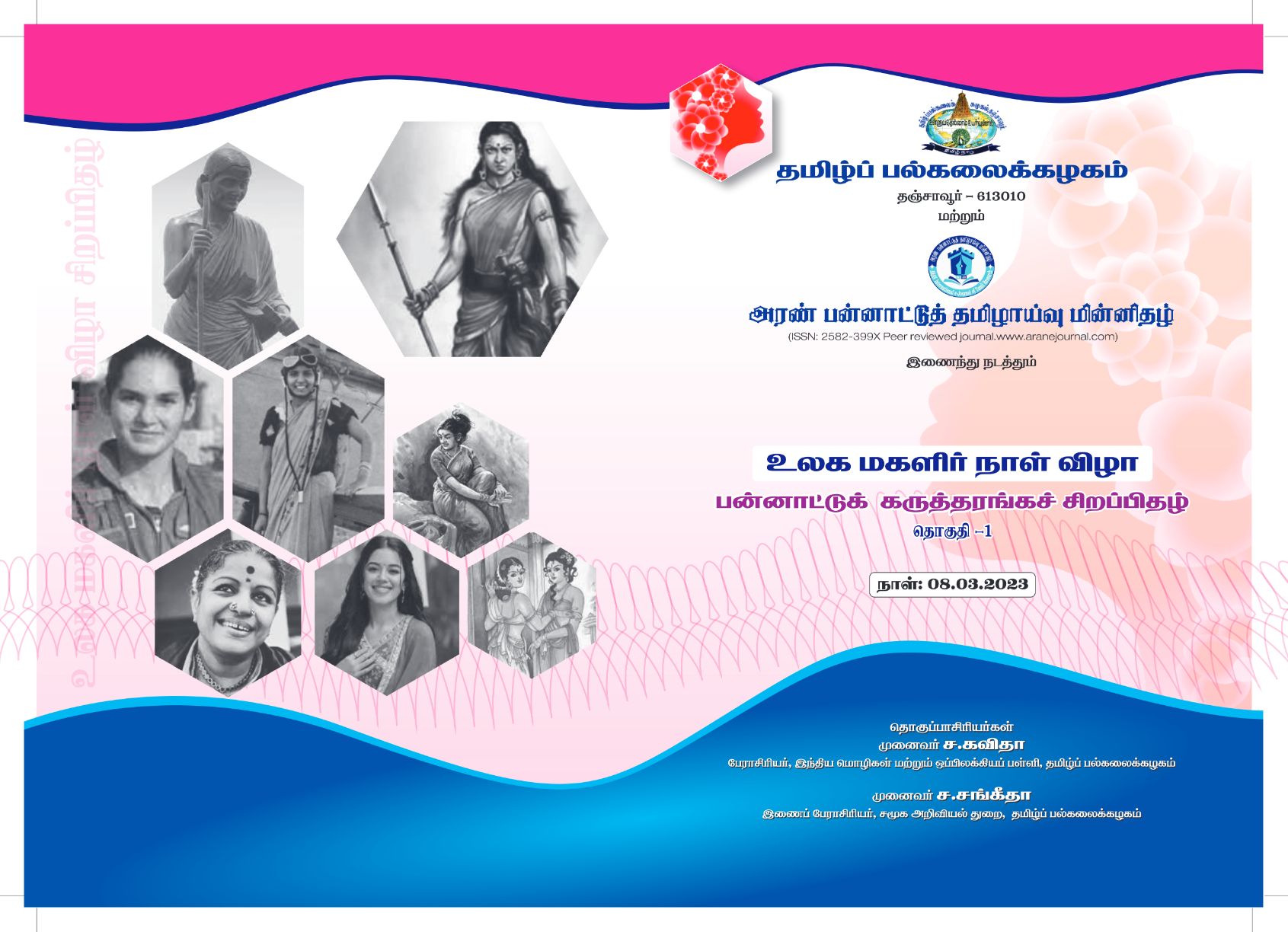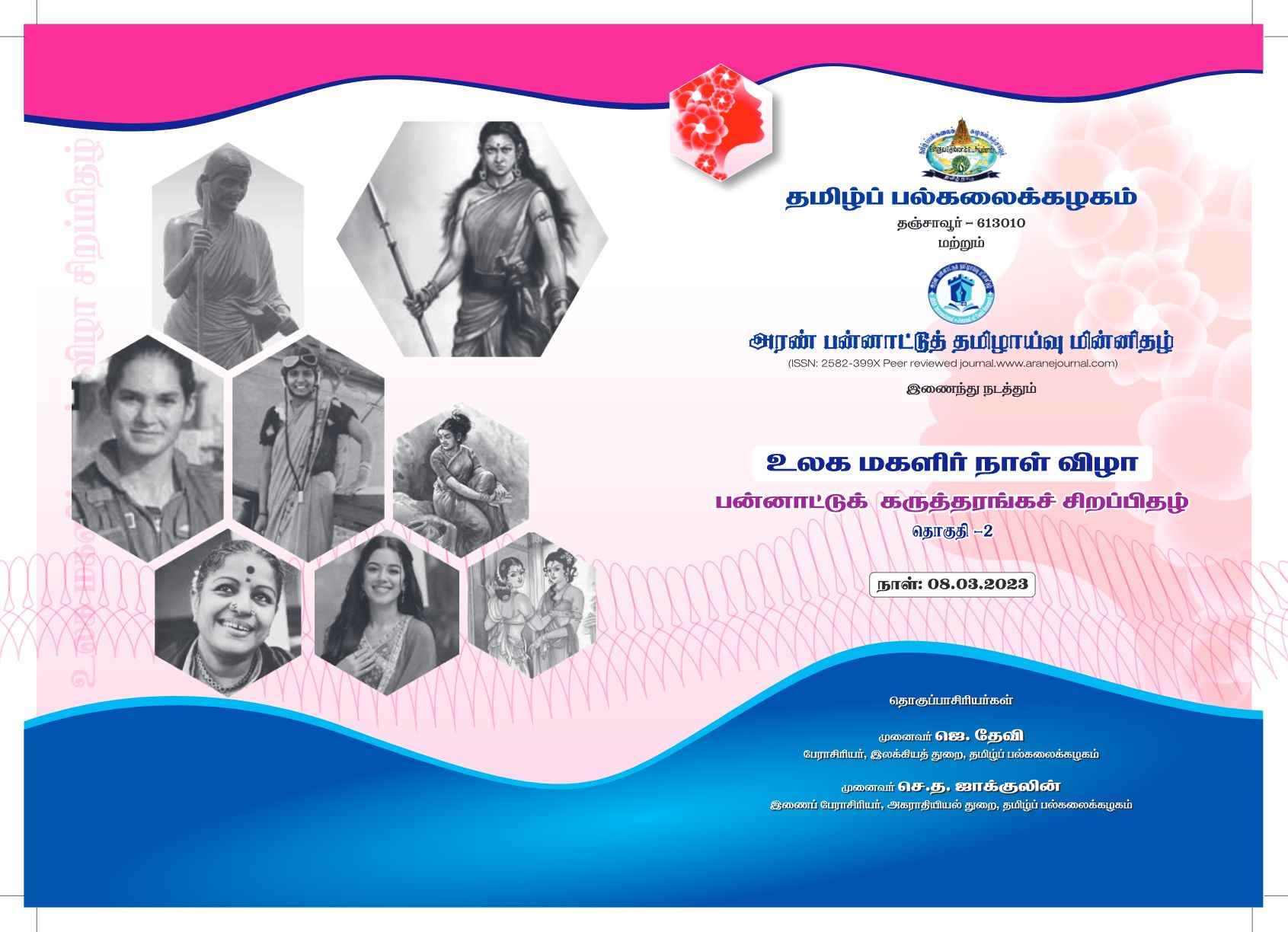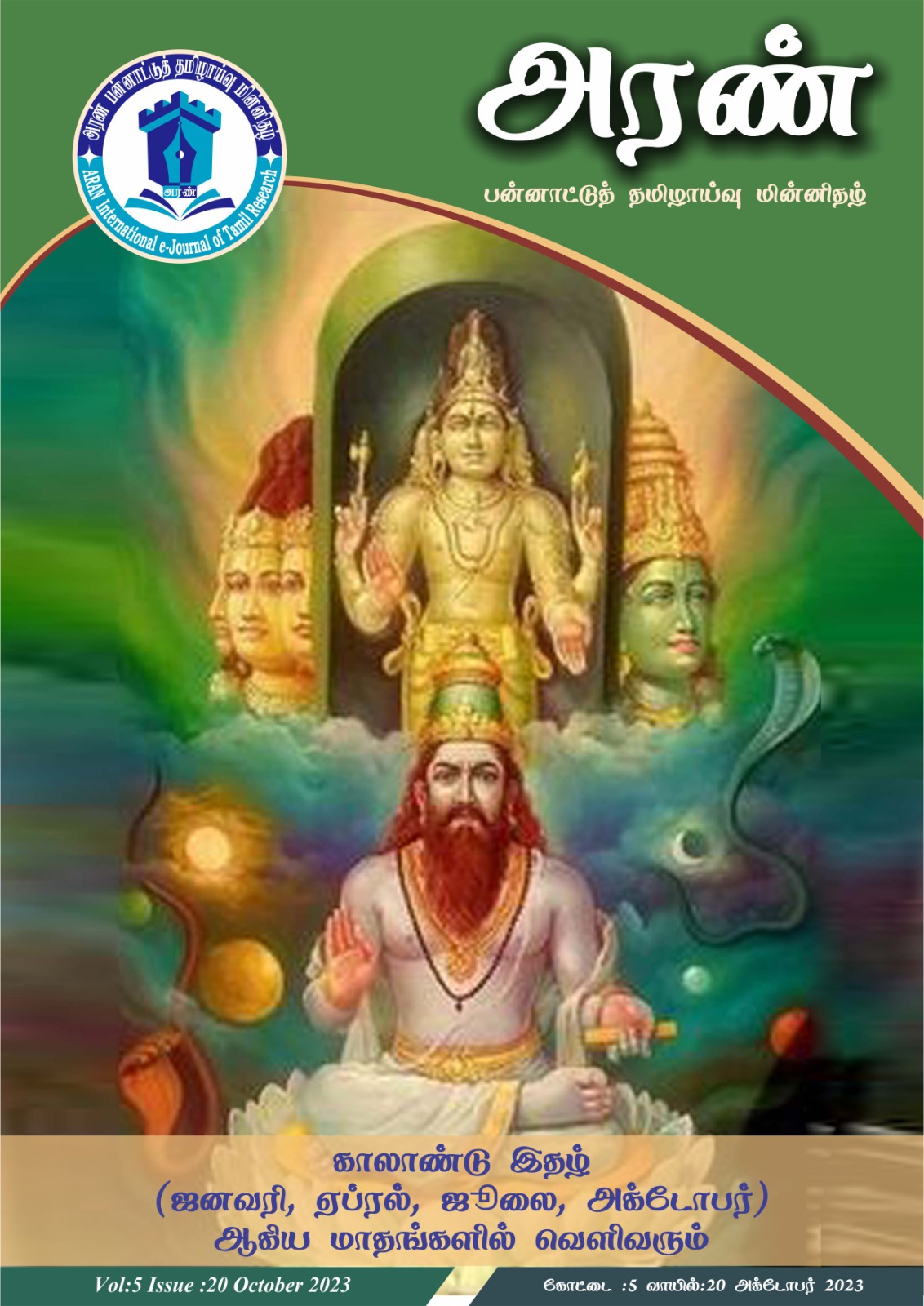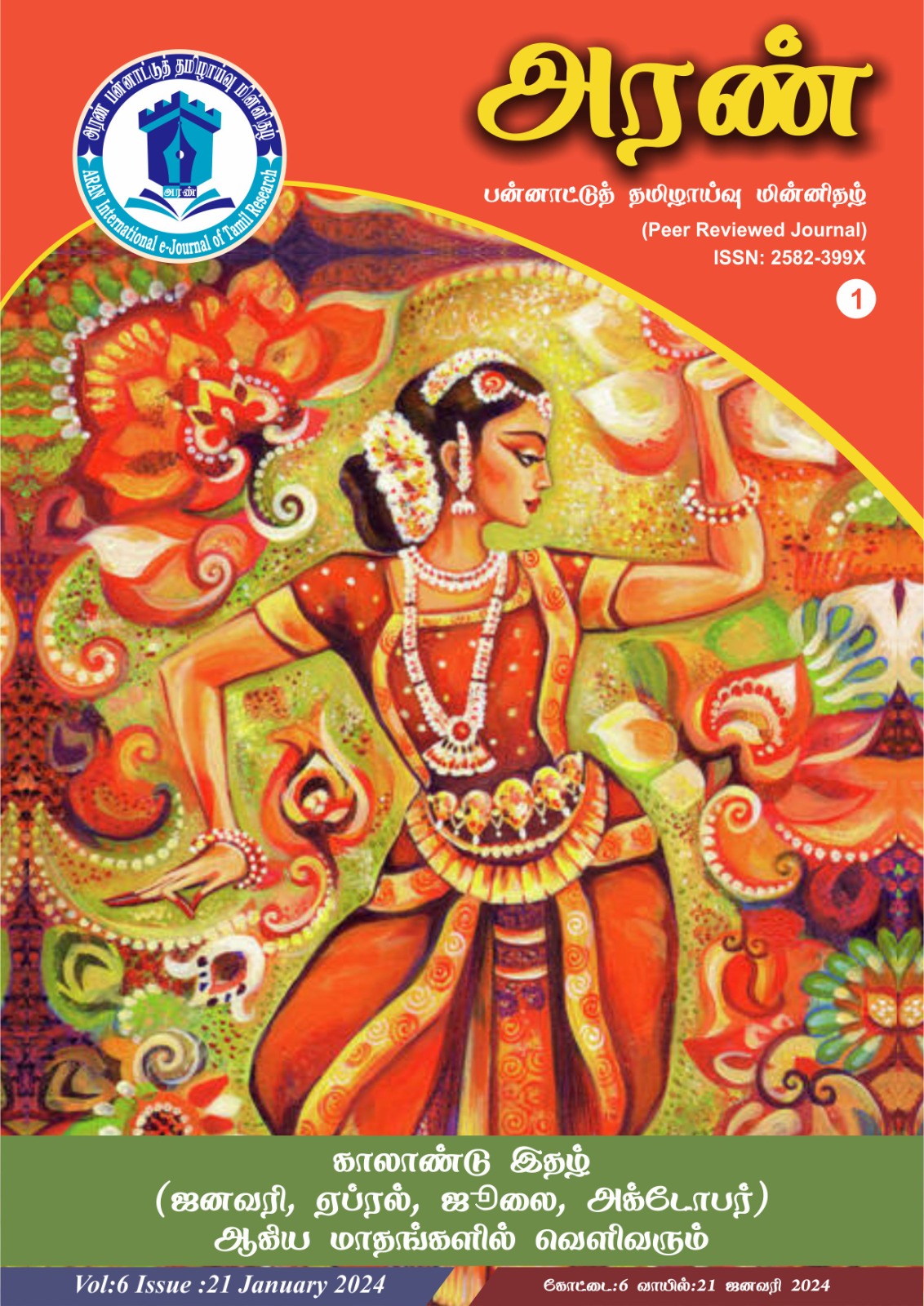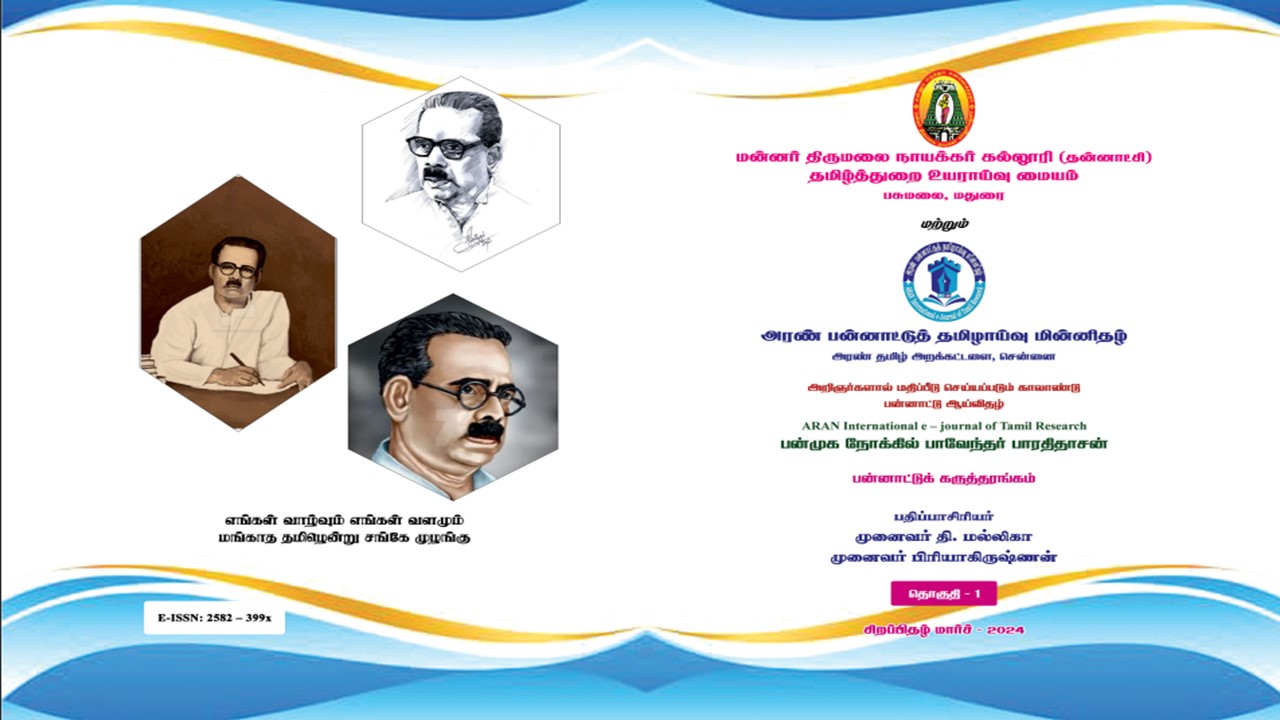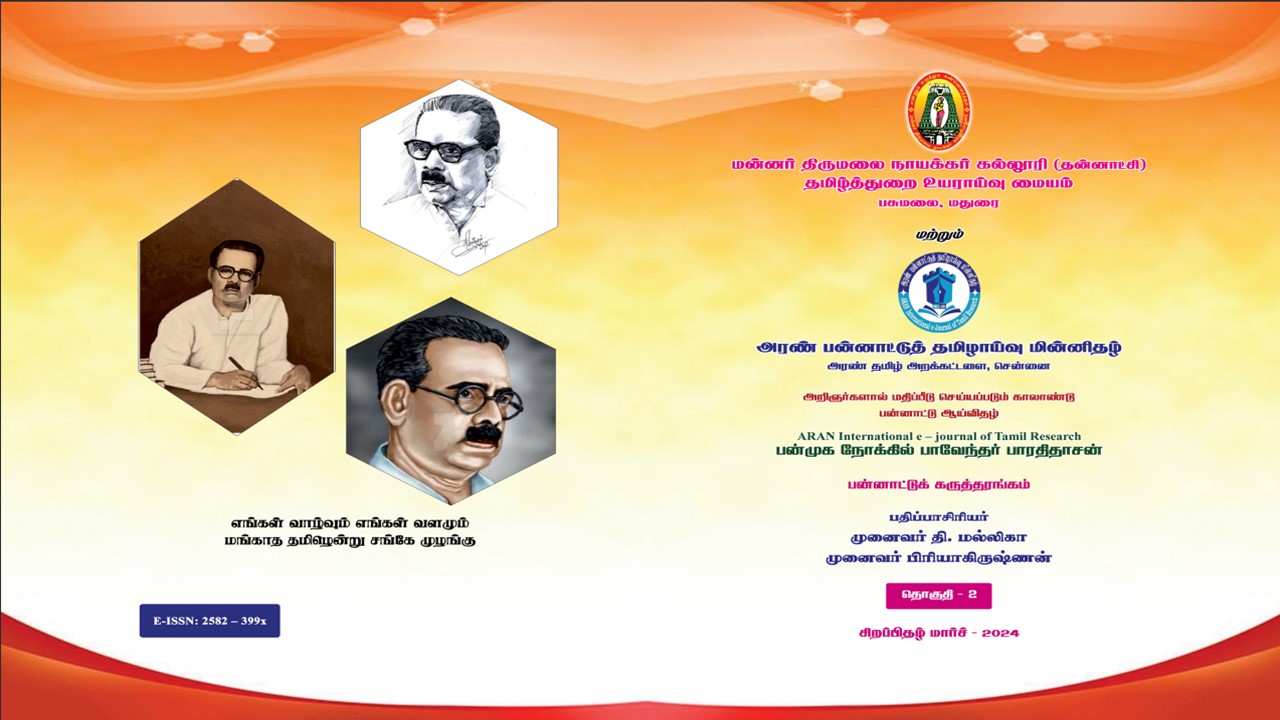INSCRIPTIONS AS TOOLS FOR ICONOLOGICAL STUDIES ABOUT LORD SIVA WITH SPECIAL REFERENCE TO TRIPURANTAKAMUTI IN THE MEDIEVAL ART OF TAMILNADU
Guide:
Prof.p.d.Balaji, head of the department, (retd)department of ancient history & archaeology, un iversity of madras, Chennai.
ABSTRACT:
Iconology is the branch of Art history that studies visual images and their symbolic meaning regarding social or political terms, in addition to religious and cultural significances of a specific art form in a region over a period of time. Iconography speaks about the descriptive account of art forms. Iconology examines and derives symbolic meanings, on more than its face value by reconciling it with its historical contexts. Distinguished scholars like Ekambaranathan. A., Champakalakshmi. R., Dayalan. Gerd. J.R. Mevissen, Schinder C.J, and K.R. Srinivasan had contributed valuable articles on the iconology of Tripurantakamurthi form of Siva from its illustrations.
The destructive event of the three flying castles (Tripuras) caused by a lethal fire tipped arrow which was wielded by Siva from a mighty bow is glorified as Tripuradahana or Tripurasamharam in the Saivite sect of Tamilnadu. The terms Rudra, Nakkan, Tripurari and Tripuranaka are directly related to the event of Tripurasamharam in Tamil literature. Similarly, names like, Trilokiasundarar, Tripuravijayar, Tribuvanasundarar, and Tanjaialagar are identified with the images of the Tripurantakamurthi form of Siva in Tamil inscriptions. Rajaraja I Chola have adopted the Tripurantaka form as his choice of a Saiva counterpart of the ‘Chakravartin’ ideal in Rajarajesvaram temple at Thanjavur. The practice of Kings setting out to the battlefield with bow and arrows and riding on a chariot drawn by horses, driven by a charioteer might have influenced the concept of the Tripuradahana episode. As per Indian tradition, both charioteer and warriors who were engaged in battle are considered as Rudramsa. Tamil inscriptions pertaining to the above said art specimens of Tripurantakamurthi manifestation of Siva revealed the fact that they were intentionally enshrined in the Siva temples of the Pallavas and Cholas during the 8th to 13th Centuries CE to boost the moral support of the warfares of the ruling Kings in Thondaimandalam and Cholamandalam respectively. Similar to Tripurantakamurthi, medieval Tamil Kings were considered as victorious ones by their royal members and laity.
KEY WORDS
Tripurantaka, Tripurantakamurthi, Tripuradahanam, Tripurasamharam, Tripuravijayar, Trailokiyasundarar, Tribhuvanasundarar, Amarasundarar, Thanjaialagar, Rudra, Rudramsa and Somaskanda .
INTRODUCTION
Iconology is the branch of Art history that studies visual images and their symbolic meaning regarding social or political terms, in addition to religious and cultural significances of a specific art form in a region over a period of time. On religious grounds, the anthropomorphic forms of Lord Siva are glorified under many manifestations in Tamilnadu. Mostly they are represented in sculptures to propagate definite moral values among the people. For instance, the Tripurantakamurthi is considered as the symbol of triumph over the evil doers, whoever they are. Interestingly, it is noted that a good number of Tamil inscriptions about this form toss light on the ruling monarch’s wishful thought process to establish themselves as powerful personalities in their contemporary period. An attempt is made in this article to study the influence of the Tripurantakamurthi aspect of Siva in the religious history of medieval Tamilnadu and the iconology behind it.
HOW ICONOLOGY DIFFERS FROM ICONOGRAPHY?
‘Iconography’, primarily deals with the descriptive account of images. It classifies and defines illustrations. Generally, textual sources related to them are self–explanatory on their own. ‘Iconology’ includes a study about objects that expresses a particular process of thought which was predominantly flourished during that time when it was created. In Tamilnadu context, in addition to religious meaning, all art forms are conveying certain ideas that are naturally implicit. Such observations and understandings are reflected in graphical raepresenstations. It is also a method of interpretation in cultural history that primarily includes artworks. It attempts to analyze the significance of that subject matter within a particular culture that produced it.
Professor. Erwin Panofsky, the most eminent and pioneer in Iconology studies of the 20th Century revealed the facts about the cultural, social and historical background of themes and subjects in visual art mediums. He proposes three levels of art – historical understanding of any art specimen. They are;
- perception of an art form only for art's sake,
- descriptive interpretation of the content of an image and
- intrinsic meaning concealed behind such illustrations.
The ‘content analysis’ deals with the meaning that present inside an artwork. It comprises certain inner meanings or the purposes behind an art creation and its need for that creation. It is apprehended by ascertaining those underlying principles which reveal the basic attitude of a nation, a period, a class, a religious or philosophical persuasion – unconsciously qualified by one personality and condensed into one work1. However the distinction between these two is closely defined, they have never been given definitions accepted by all iconographers and iconologists so far. Hence, it is better to surmise that ‘beyond the description of an art specimen’, iconology examines and derives symbolic meanings, on more than its face value by reconciling it with its historical contexts.
PREVIOUS WORKS2.
Distinguished scholars like Ekambaranathan. A., Champakalakshmi. R., Dayalan. D., Devagana Desai, Gerd. J.R. Mevissen, Niharranjan Ray, Ratan Parimoo, Schinder C.J, Sivaramamurthi. C, Srinivasan. K.R. and Vidhya Dehejia had contributed valuable articles on the iconology of certain Indian religious illustrations.
CONCEPT OF TRIPURANTAKAMURTHI FORM OF SIVA IN TAMILNADU
The concept of Tripurantakamurthi manifestation had derived its origin mainly from Vedic, Puranic and Agamic texts. In Saivism, it is one of the famous Samharamurthi forms of Lord Siva. It revolved around the Tripurasamharam episode. It is the destruction of three fortresses (Tripuras) of the three Asura brothers (Tripurasuras) namely Tarakaksha, Kamalaksha and Vidyunmali. It was caused by a lethal fire tipped arrow which was wielded by Siva from a mighty bow.
As per Tamil and Sanskrit literary sources, a special cosmic chariot was built for the very purpose of this task. Various Gods/Devas like Agni, Soma, Sun, Vayu, Vishnu, etc., became the components of it. Thus, a grand alliance was formed under the leadership of Rudra - Siva to vanquish the Tripuras. Incidentally, Devas became very much proud that they were the instrumental force for the destruction of Tripuras. At this junction, Lord Siva made a boisterous laugh (Attakasa) and burnt down the Tripuras into ashes by emitting fire from His third eye of His forehead. (siriththup puram eriththa piran). This sequence of the moment with a smile on the lips and Raudra Drishti (anger in the eyes) are well captured in the mural fresco of the Rajarajesvaram temple at Thanjavur. The continuity of this smile is seen in the metal icons of this form. In this connection, the term ‘Nakkan’ is referred in the Tevaram hymns.
According to Sanskrit Vedic and Tamil Tevaram literary sources, ‘Rudra’, the precursor of Puranic Siva was chosen for this mission. In the course of its narration ‘Rudra’ is transformed into Rudra – Siva alias Mahadeva and then into Mahesvara. After burning down the Tripuras, He was glorified with the epithet ‘Tripurantaka’. In the Sanskrit language ‘Tri’ means ‘three’, ‘Pura’ means ‘cities’ and ‘antaka’ means ‘ destroyer’. Thus, the name Tripurantaka was coined.
BRIEF ACCOUNT ON THE ICONOGRAPHY OF TRIPURANTAKAMURTHI
Tripurantakamurthi form of Siva is mostly portrayed in three major postures viz.,
- Standing pose (Sthanaka),
- Seated (Asana) and
- Stepping into or standing in the middle of the chariot (Alidha).
It is described in great detail in almost all the agamic authorities while prescribing the guidelines for the creation and installation (Purari Sthapanam) of this aspect of Siva3. They prescribe the forms and norms of its iconography and iconometry procedures. Among the eight prescribed forms, there are not many points of material difference between one from another4. In the free-standing sculptures, only two kinds of representations are available in more numbers. In the first category, Siva’s right leg steps in little front while the left one is slightly bent behind. In the second type, Siva’s left leg is raised and rests upon the Apasmara Purusha. He is modeled either with 2, 4, 6, 8,10, or 16 hands. Generally, four hands are fashioned in stone and metal sculptures. In that case, the front right and left hands are meant for holding an arrow and a bow respectively as primary attribution. The right and left hands of the rear side are attributed with an axe and a deer respectively. As per the tradition, Tripurantaka Siva should be installed along with His consort Janma jara mrithyu nasini. Both should be elegantly bejeweled including the Jatamakutas. The metal icons from Kodumudi, Achchalpuram and Thottiam are having an image of a maid for Siva’s Consort.
TRIPURANTAKAMURTHI RELATED TAMIL INSCRIPTIONS
The terms Rudra, Nakkan, Tripurari and Tripuranaka are directly related to the event of Tripurasamharam in Tamil literature. Similarly, names like, Trilokiasundarar, Tripuravijayar, Tribuvana Sundarar, and Tanjai Alagar are identified with the images of the Tripurantakamurthi form of Siva in Tamil inscriptions. A concise explanation about them is given below:
TRAILOKIYASUNDARAR
The Pushpavanesvara Temple is located at Thiruppunthuruththi (10.8630 0N 79.0800 0 E) near Thanjavur. It is believed that Indra, Surya, Maruts, Markandeya and Kashyapa were paid their devotion to this Lord to obtain salvation. According to an inscription of this temple, the queen of Parantaka Chola, Kokilanadigal installed an image of Trailokiyasundarar5. She also made donations for maintaining a lamp and offerings to this image in the 20th regnal year (927 CE) of the King. In the Sanskrit language, this phrase means ‘the handsome person of the three worlds/cities’.
TRIPURAVIJAYAR
The Uma Mahesvara Temple is located at Konerirajapuram (10.96910N, 79.53910E) near Kumbakonam. It has a very fine specimen of Tripurantakamurthi with consort. It was donated by the pious Queen Sembianmahadevi in the reign of Uththama Chola6. According to this inscription (978 CE), she made land grants for special worship and offerings to the images of Tripuravijayar, Rishabhavahanathevar and Ganapathiyar. It further states that a sacred bath (Abhishegam) with five articles including milk, curd, sugar, honey and butter should be performed on certain days with this endowment. This metal icon is still in worship in the above-said temple more than 1000 years. The term ‘Tripuravijayar’ literally means the person who made a victorious march over three cities. Perhaps she may be referring to her son Uththama Chola’s visits to his kingdom. To support this view, many of his inscriptions were issued by him when he was in camps away from the Chola capital.
TRIBHUVANASUNDARAR
One of the donative inscriptions found in the Ramanathesvarar temple at Thiruramesvaram (10.7760 0 N, 79.633 0 E) near Karaikkal speaks about a land grant to lit lamps and offerings in the shrines of Brahmisvarar and Tribhuvanasundarar7. This donation was made in the reign of Rajaraja I Chola (8th regnal year 993 CE) by a person named Sobhanayyan (Kuthiraikarar). He may be the Charioteer or the person who was in–charge of the royal horses of the King. These two images might be the stone sculptures of Brahma and Tripurantaka enshrined in Devakoshtas around the Garbhagriha. It infers that worship of these divinities was vogue during 11th Century CE. The Sanskrit term ‘Tripurasundarar ‘means the person who was handsome in three worlds or cities’.
THANJAIALAGAR
To the Rajarajesvaram temple at Thanjavur (10.78700 N, 79.13780 E) Panchavanmahadevi, one of the Queens of Rajaraja I Chola, donated a solid copper metal icon in the name of ‘Thanjai Alagar’8. This phrase literally means ‘the handsome person of Thanjavur’ in the Tamil language. Presumably, the queen might had equated her King husband Rajaraja I Chola to Tripurantaka in this depiction. The inscription pertaining to this icon clearly registers its iconometry and iconography details. The image is attributed with four arms. Siva rests his left leg on the left hand of Apasmara Purusha (Muyalagan). Both Siva and His consort Uma Paramesvari stand in two separate Padmasana which is set with jewels. They are installed on a single pedestal. Both the images are encircled by a solid aureola (prabhavali/thiruvasi). It is supported by two ornamented pillars and the ardhachandra upper element connecting the two sides. This image is now housed in the Thanjavur Art gallery. It is identified as Tripurantaka form of Siva by Dr. R.Nagaswamy.
Rajaraja I Chola himself donated an icon in the name of ‘Thanjai Vidangar’. Unlike the ‘Thanjai Alagar’ image, it does not have any direct references to its description in lithic records 9. Such form of Siva as Tripurantaka as appeared during the period of of Rajaraja I Chola in the Siva temples at Thanjavur region is yet to be studied properly.
One of the Kulotunga I Chola inscriptions found on the pedestal of the Tripurantakamurthi icon from the Thanjavur region states that a person called Cholapperaiyan10 made a land grant for the worship of Lord Siva. A perpetual income was arranged to ensure the facilitation of puja services to this God. Similar donation inscriptions are yet to be identified from the voluminous corpus of Tamil inscriptions for the study of the iconology of religious art in Tamilnadu. Invariably, all the latter Chola Kings had the prefix ‘Tribhuvana Vira’ or ‘Tribhuvana chakravarthin’ to their names, which means ‘the heroic person who conquered three worlds or the ‘Lord of Three Worlds’. It can be taken as the influence of the Tripurasamhramurthi episode, in which Siva destroyed the Tripuras of the Tripurasuras and acquired the epithet ‘Tripurantaka’ (the destroyer of three cities). A concise list is given below:
TRIBHUVANACHAKRAVARTHIN:
- Tribhuvana chakravarthi - Kulothunga Chola I (1070 – 1120 CE)
- Tribhuvana chalravarthi - Vikrama Chola (1118 -1136 CE)
- Kulothunga Chola II (1133 – 1150 CE): Who built the golden roof for Siva Nataraja at Chidambaram (‘Perambalaththukkup pon veindha Tribhuvana chackravarthi Kulothungach choladevan’)
- Rajaraja Chola II : ‘Tripbhuvana chakravarthi Rasarasath thevan’ (1146 – 1163 CE)
- Rajadhirajan II : ‘ Tribhuvanach chakravarthi Rasadhi Rasadevan’ (1163 – 1178 CE)
- Rajaraja Chola III : ‘Tribhuvanach chakkravrthi rasarasath thevar’ (1216 – 1256 CE)
- Thirukkalaththi thevan Gandagopalan: (contemporary to Kulothunga chola I). ‘Tribhuvanach chakravarthi aallum thrirukkalaththi Kandagopalath thevan’.
- Rajaraja Gandagopalath thevan: (Contemporary to Rajaraja III ) ‘Tribhuvanach chakravarthi Rasarajan Gandagopalath thevan ‘
- Vijaya Gandagopalan: (Contemporary to Rajendran III ) ‘Tribhuvanach chakravarthi Vijaya Gandagopalath thevan’
- Sadaiyavarman Sundarap pandian I : ‘Tribhuvana chakravarthi Jatavarman Sundarap Pandiyan thevan’,(1250 CE)
RUDRA
- Kakathiya Dynasty 1st King : Kakaththi Rudradeva
- Prathapa Rudradevar (1295 – 1323 CE) also known as ‘Vira Rudra’.
- Rudramadevi, daughter of Kakathiya Ganapathi
- Prathapa Rudradeva, grandson of Rudramahadevi : ‘Mahamandalesvara Prathapa Rudra Devar’(1295)
After the 13th Century CE, exaggerated phrases like ‘Sakalabhuvana Chakravarthi’ which means the ‘Lord of all worlds’ and ‘Mahamandalesvara’ which means ‘God of a vast province’ were used to replace the above said phrases in Tamil inscriptions. They declared the supremacy of the ruling king in a particular region especially far away from their capitals. Thus, a shift of expressing the authority over their counterparts was witnessed from the length and breadth of the medieval Tamil country up to north at Thiruvengadam (modern Thirumala – Thirupathi Town). The foregoing analysis revealed the fact, that these phrases were prefixed to the main name of the above said Kings during the medieval period not only in Tamilnadu but also beyond Tamil country.
ANTAKAN
The Tamil word ‘Antakan’ means Yama, the God of death. The person who is responsible for killing someone or destroyer of something is denoted by the Tamil word ‘Antakan’. The epithet ‘Tripurantaka’ of Siva was given in remembrance of the Tripurasamharam event. This term significantly refers to the heroic nature of Lord Siva. Early Chola monarchs like Parantakan and Madhurantakan were named to testimony their prowess against their contemporary Kings. For instance, the title ‘Keralantakan’ infers Rajaraja I’s conquest over the Kerala Desa and was honoured him with the epithet Keralanthakan. To commemorate his victory, he named the first entrance gateway tower (Rajagopuram) of the magnum opus Rajarajesvaram temple at Thanjavur as ‘Keralantakan Thiruvayil’.
NAKKAN
As mentioned earlier, there are two versions of the destruction of the Tripuras. One is that they were destroyed by the arrow of Rudra – Siva. The other is that He laughed at the Tripuras and the very reverberations of the boisterous laughter reduced them into ashes11. It was by this act of laughter at the tripuras to bring about their destruction, Siva came to be known as ‘Nakkan’. This term is frequently mentioned in Tamil inscriptions. Apart from Kings, it was widely used by people from all walks of life. For instance, one of the inscriptions found in the Pachchil Amalisvaram Siva Temple at Gopurappatti near Trichy (10.7905 0 N 78.7047 0 E) speaks about a donation made by Nakkan Viranarayani12, one of the Queens of Uththama Chola. According to this inscription, two metal icons of Amali Sundarar and His consort Uma Paramesvari were installed in this temple by her. Both of them had a prabha and a pada pitha (aureola and pedestal). They were taken out for the procession during the Vaikasi Visakam festival. Even today, the Tripurasamharam annual festival is celebrated at Thiruvathigai in the Tamil month of Vaikasi (April / May). The relation between these two is yet to be verified with other associated inscriptions regarding festivals. The name ‘Amali Sundarar’ means ‘the handsome divinity of the temple called Amali (svaram)’. Like the previous inscriptional phrases, it also envisages the aesthetic sense of the medieval Tamils.
AMARASUNDARAR
The Achalesvara Shrine is an early Chola structure located in the second prakara of the Thyagarajaswamy temple at Thiruvarur (10.7661 0 N 79.6344 0 E). Its inscriptional name is Thiru – Araneri – Alvar temple. Its antiquity can be traced from the Tevaram hymns of the Panniruth Thirumuraigal. It was reconstructed into stone by the pious Chola Queen Sembian Mahadevi in 10th Century CE. Two inscriptions speak about the donations that she had made in memory of her son Uththama Chola. The first one dated to 987 CE states that she had donated silver vessels to the God of this temple13. The second one dated to 992 CE confirms that this temple was built by stone by her. It also registers that she had set up here two idols in the names of Amarasundara Devar and His consort. She also presented 234 Kasu for daily requirements to these idols, structural additions to this temple and repairs. She made a land grant meant for sacred food offering to this God (Neivedhyam). The word ‘Amara (n)’ means the deceased person. Thus, this phrase Amarasundaradevar evidently tells that the icon was enshrined posthumously in merit and remembrance of her son Uththama Chola. As a beloved mother, the queen addressed her son in this aesthetic term. This data reveals the nearby date of that icon also.
IMPORTANCE OF ICONOLOGICAL STUDY ON TRIPURANTAKA IN TAMILNADU
Early Indian dynasties had used the Buddha and Vishnu as representing the concept of ‘Chakravarthin’14. Rajaraja I Chola have adopted the Tripurantaka form as his choice of a Saiva counterpart of the ‘Chakravarthin’ ideal in Rajarajesvaram temple at Thanjavur. The practice of Kings setting out to the battlefield with bow and arrows and riding on a chariot drawn by horses, driven by a charioteer might have influenced the concept of the Tripuradahana episode. The same was attributed to the warrior pose of Lord Siva. That’s why several references of this form are mentioned in Tamil literary works. The popularity of this myth is also indirectly alluded as ‘Pereyil muruvalar’ (who destroyed the forts by a charming smile) and ‘Nakkan’.
Representations of Tripurantakamurthi on chariot, seated and in warrior mode are present in the shore temple complex at Mamallapuram (12.62080 N 80.19450 E). Among them, the magnanimously seated Tripurantakamurthi resembles a King on throne. Presence of a bow and an arrow with an image of Vishnu in the arrow tip denotes that this illustration is the Tripurantaka form of Siva. This seated portrait sculpture is only one of its kind in Tamilnadu. Unfortunately, no associated inscriptions are found for this image. The rest of the Pallava Tripurantaka images were portrayed in dynamic warrior mode. In all the Pallava portrayals, it can be noted that the Tripurantakamurthi myth is exclusively given more importance like Somaskantha manifestation of Siva. The Tripurantakamurthi metal icons which are donated by the Pallava and Chola kings are available for study in the Siva temples16, Govt. museums and in private collections.
Iconological studies should involve an integrated approach to text and context15. The text includes inscriptions and literary references about that art object. Regarding the content, it may be provided by the ecology, location, architectural precursors of the site, mythologies associated with that particular depiction and so on. These data provides content analysis is about the meaning inside an art specimen or the need and purpose behind such art creation. For example, the Somaskanda form of Lord Siva is represented by Siva, His consort Parvathi and His son Skanda (Murugan) in a single panel based on puranic account. In Tamil tradition, it is an integration of Korravai, the Goddesses of the desert region (Palai) and Murugan the God of hilly tracts (Kurinji) with the uprising Siva cult during the Sangam epoch around 300 CE. This manifestation of Siva occupied a prominent place in the Pallava temple architecture of Tamilnadu. The Gangadhara form is associated with the water resource and distribution for irrigation which is yet to be studied properly.
Akin to the Pallava tradition, Cholas promoted the Tripurantaka form of Siva in their art mediums. One can identify it either as one among the Sri Vimana devatas or housed in Devakoshtas in Siva temples. As per Indian tradition, both charioteer and warriors who were engaged in battle are considered as Rudramsa. Hence, after 600 CE, there is a universal application of the divine aspects like Rudra and Tripurantaka in all, whether a King, Commander – in – chief of the army itself, warrior, a chariot maker, a chase attendant or any other irrespective of the category seems to be in vogue.
The above said stone and metal sculptures of Tripurantaka form of Siva are depicted as a monarch and a victory symbol to the public under the disguise of an already popular divinity namely Tripurantaka. The attribution of a bow and an arrow of this narrative and iconic representations attests the glory of an aristocratic warrior who was a chariot–borne archer17 as described in the Mahabharata epic ( verses 5, 149). In the continuity of this tradition, Siva in the Tripurantaka aspect is always portrayed with a simple or composite long bow. Like Him, some Gods are conceived as archers par excellence, notably the Kama, the God of love, Ushas and Prathyushas, the goddesses the dawn, Rama and Lakshmana, Trivikrama form of Vishnu and Durga as Mahishasuramardhini attributed with a bow and arrows. Even the Kirata (hunter) form of Siva is portrayed with a bow and an arrow. Yet, a most spectacular specimen is Tripurantaka, a Rudra facet of Siva who destroyed the Tripuras by a single arrow shot. Rudra was explained in terms of time and death in Vedic hymns. Causing death and liberation of the soul is the iconology note hidden in the Tripurantaka images. Thus, the real significance of this icon is better understood when it is described in a larger context envisioning the pantheon of Gods in Tamilnadu. A historical survey of these icons also revealed the approximate date of Tripurantaka sculptures in Tamilnadu. envisage
INFLUENCE OF MYTHS IN THE RELIGIOUS HISTORY OF MEDIEVAL TAMILNADU
Tamil inscriptions pertaining to the above said art specimens of Tripurantakamurthi manifestation of Siva revealed the fact that they were intentionally enshrined in the Siva temples of the Pallavas and Cholas during the 8th to 13th Centuries CE to boost the moral support of the warfares of the ruling Kings in Thondaimandalam and Cholamandalam respectively. After this period, this form of Siva lost its glory and paved the way for the emergence of Nataraja (Ananda Thandava – eternal bliss) Cult in Tamilnadu which requires a separate study for convincing continuity of the Tripurantaka cult in medieval Tamil country.
The development of the Puranic Saivism of Tamilnadu is represented by the integration of Vedic Gods. It is evident from the syncretic panels of Somaskantha by the Pallava. It should be noted that like Siva, His consort and son are also associated with wars to eradicate evil forces. Thus, the three deities namely Siva, Parvathi (Korravai) and Murugan (Skanda) merged into a single iconographic theme called Somaskanda. The Kailasanatha Temple at Kanchipuram (12.8185 0 N 79.6947 0 E) and the Rajarajesvaram Temple at Thanjavur portrays Tripurantaka form of Siva in all the possible depictions as mentioned in the Agamic and Silpasatras. The latter possess many Tripurantakamurthi forms of Siva and related depictions in stone, metal and painting mediums. Perhaps it may be due to the influence of Kalamukha or Pasupata sect of Mahesvara Saivism was flourished in Pallava and Chola period. The scope of their imperialism was in a peak and ever-expanding territorial annexations evidenced the importance of war and its associated themes in the religious sphere. Among the various Siva manifestations, the Tripurantaka form aptly suits the quest and thirst for their political significance. Possibly people were motivated and supported the dream of their King’s victory over the far away lands in the north and south of the core Cholamandalam region i.e. Thanjavur Cauvery basin. The Agamic texts enumerated the benefits for the installation and ritual practices of the Tripurantakamurhi form of Siva in temples. For example, the 60th Chapter (padalam) in the Uththarakaranagamam says that such set-up of images will bestow the King with victory and all goodness to his subjects.
CONCLUSION
The extent of the Tripurasamharam myth caught the imagination of the Tamil poets is evident from Tamil Sangam anthologies which can be dated from 300 BCE to 300 CE. They equated their contemporary Kings with the glory of Tripurantakamurthi, just mentioning the event Tripuradahanam. In the subsequent Bhakti movement period i.e. 600 CE onwards, the cult of Siva has been progressed into a religion of masses. From 8th Century CE onwards, Tamil Kings were symbolically eulogised in their inscriptions and equated with the epithets of divinities. They were portrayed in stone and metal sculptures with great artistic merit. The Tripurantakamurthi manifestation of Siva symbolised the victory over the evil doers. It also established itself as a political imagery in the medieval period of Tamilnadu i.e., around 1000 CE. Such icons were enshrined in the expanded territories of their respective Kings in different periods. Similar to Tripurantakamurthi, medieval Tamil Kings were considered as victorious ones by their royal members and laity.
FOOTNOTES AND REFERENCES
- Erwin Panofsky: Studies in Iconology: Humanistic Themes in the Art of the Renaissance, First Icon Edition, West View Press, A member of the Perseus Group, Colorado. The United States of America. 1972. P. 7
- Scholars and their title of contributions in alphabetical order: Ekambaranathan.A (Rajaraja I Chola and Tripurantaka 2008), Champakalakshmi. R (Somaskanda in Rajasimhesvaram and Tripurantaka from Rajarajesvaram Temples, 2011), Dayalan. D (Tripurantaka references in Tevaram hymns, 1991), Devagana Desai (The religious Imagery of Khajuraho, 1997), Gerd. J.R. Mevissen Early stone Sculptures of Tripurantaka in South India, 2006) Niharranjan Ray (Buddha, 1932), Ratan Parimoo (Buddha 1982 & Indian Sculpture 1999), Schinder C.J, Sivaramamrthi (Speculation on the Theme of Siva as Tripurantaka, 1987), Srinivasan.K.R (Depictions of Tripurantaka in the Brihadisvara temple at Thanjavur, 1987) and Vidhya Dehejia (The Body adorned, 2009).
- Amsumadbhedagama, Uttarakamikamaga (49th Chapter) and Kashyapa Silparatna (22nd Chapter) speaks about eight different descriptions of the Tripurantakamurthi form of Siva. Sarasvathiya Chithrakarmasasthram (22nd Chapter), Purva Karanagama (85th Chapter), Uttarakaranagama (60th Chapter), Ajithagamam, Rowragamakam, Deeptagamam (38th Chapter), Sakaladhikaram and Srithaththuvanidhi prescribes the guidelines for the installation of Tripurantakamrthi images and the benefits received by the sponsor (Yajaman) for this act of charity.
- Gopinatha Rao. T.A: Elements of Hindu Iconography, Volume Two, Part I, Mothilal Banarsidass Publishers Private Limited, Delhi. 1914 1st Print, 1997. Reprint. P. 166
- Balasubhramanhyam.S.R: Early Chola Art part 1, Asia Publishing House, London. United Kingdom. 1966. P.165.
- SII Volume III Part III No. 151A
Line No.80: ‘…..Tripuravijayarkku thiruvamudhukku Thirunallaththil kusapparril orumavarai munthirikai kil ettu ma mukkani munthirikai kadugal koyilin meladhu Umaya pidarikku…’.
- ARE No. 146 of 1911
- SII Volume II No. 5
‘Kunjitha thiruvadiyin kiz kidantha Muyalagan kuda pathathi kesantham iru muzhamae nal viral usaram sri hastham nal udaiya ganamaka ezhuntharuviththathu’.
- Balasubrahmanyam.S.R: Middle Chola Temples: Rajaraja I Chola – Kulothunga I, Thomson Press (India) Limited, Publication division, Faridabad, Haryana, India. 1975. P .38
- Narayanaswamy.S: Mahatripurantakar, Thiruvavaduturai Adheenam Saraswathi Mahal and Research center, Thiruvavaduthurai.Tamilnadu. 2011. P. 239
- (i) Thirupunthuruthi Thiruvnavukkarasar Tevaram Pathigam:
“Vindar puram mudrumeva nokki nakkan” (Verse 5)
Meaning: Siva laughed towards the burning Tripuras
(ii) Thiruchchorruththurai Thirunavukkarasar Tevaram Pathigam :
“‘Ennar purankan mundru imaiya muneri koluva nokki nakka thinnavane’ (Verse 4)
Meaning: Siva burnt down the tripuras by emitting fire from His third eye
(fore head netrikkan) by His glance.
(iii) Thirumazhappadi Thirugnanasambhandar Tevaram Pathikam :
“Mumpuram eriunna nagai seithar” (Verse 7)
Meaning: Siva made laugh when the tripuras were engulfed by fire.
- Op.cit. Balasubrahmanyam.S. R. 1975. p. 380
- ARE Nos. 570 & 571 of 1904
‘Thiru – Aran-neri Alvar koyil Tiruk-Karrali elundarulivitta udaiya pirattiyar Sembian Madeviyar ikkoyilil than eduppiththa elundarulivichcha Amarasundara Devarkkum, Uma Bhattariyakkum thiru vamudhukkum pudukkuppuram agavum palisaikkittuk kolga endru konda parisavadu’.
- Gary. J. Schwindler: Speculations on the Theme of Siva as Tripurantaka as it appears during the reign of Rajaraja I in the Tanjore Area ca. A.D. 1000 in the Journal ‘Ars Orientalis’ Volume 17, 1987. p. 163, University of Michigan, United States of America.
- Champakalakshmi. R: Religion, Tradition and Ideology: Pre-colonial South India, Oxford University Press, New Delhi. 2011. P. 495
- The writer of this article has chosen Stone sculptures from Kanchipuram, Mamallapuram, Kodumbalur, Pullamangai, Thanjavur, Thiruchengattankudi and Thirukkattalai are compared with the good number of metal Sculptures from Achalpuram, Achcharappakkam, Chinnadharapuram, Idumbavanam, Thiruvaiyaru, Kalappal, Kodumudi, Konerirajapuram, Mayiladuthurai, Pannatheru Thirumukkattalai, Perumanallur, Pundi, Seranmadevi, Thanjavur, Thirukkodikkaval, Thiruneipper, Thiruvathigai, Thiruvaiyaru, Thiruvarur, Thiruvidaikkazhi, Thottiyam, Vadarangam, Vallam, Vellanur, Vellur and Veezhimangalam for the iconography and iconoilogy on Tripurantaka
- Valerie J. Rosebuck : Weapons as Symbols Hindu Art in Symbols in Art and Religion, (Ed.) Karel Werner, Mothilal Banarsidass Publishers Private Limited., Delhi. 1991. P. 147 .
FURTHER READINGS:
1. Erwin Panofsky: Studies in Iconology: Humanistic Themes in the Art of the Renaissance, First Icon Edition, West View Press, A member of the Perseus Group, Colorado. The United States of America.
2. Balasubhramanhyam.S.R: Early Chola Art part 1, Asia Publishing House, London. United Kingdom. 1966.
3. Balasubrahmanyam.S.R: Middle Chola Temples: Rajaraja I Chola – Kulothunga I, Thomson Press (India) Limited, Publication division, Faridabad, Haryana, India. 1975.
4. Champakalakshmi. R: Religion, Tradition and Ideology: Pre-colonial South India, Oxford University Press, New Delhi. India. 2011.
5. Karel Werner (Ed.): Art and Religion, Mothilal Banarsidass Publishers Private Limited., Delhi. India. 1991.
6. Narayanaswamy.S (Ed.): Mahatripurantakar, Thiruvavaduturai Adheenam Saraswathi Mahal and Research center, Thiruvavaduthurai.Tamilnadu. India 2011

